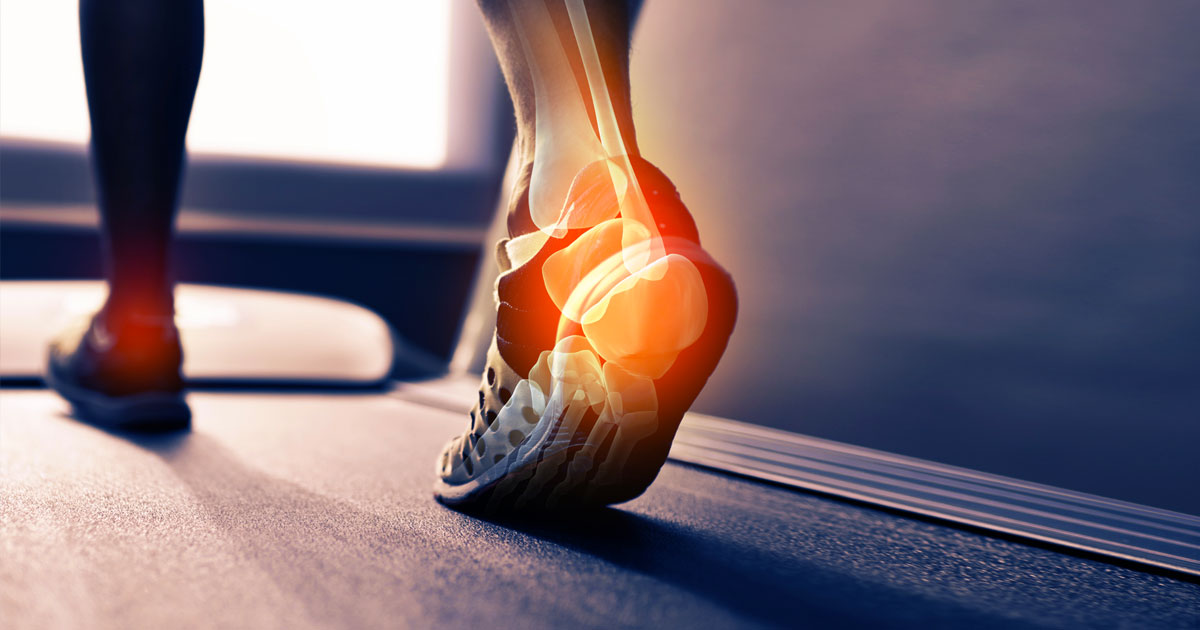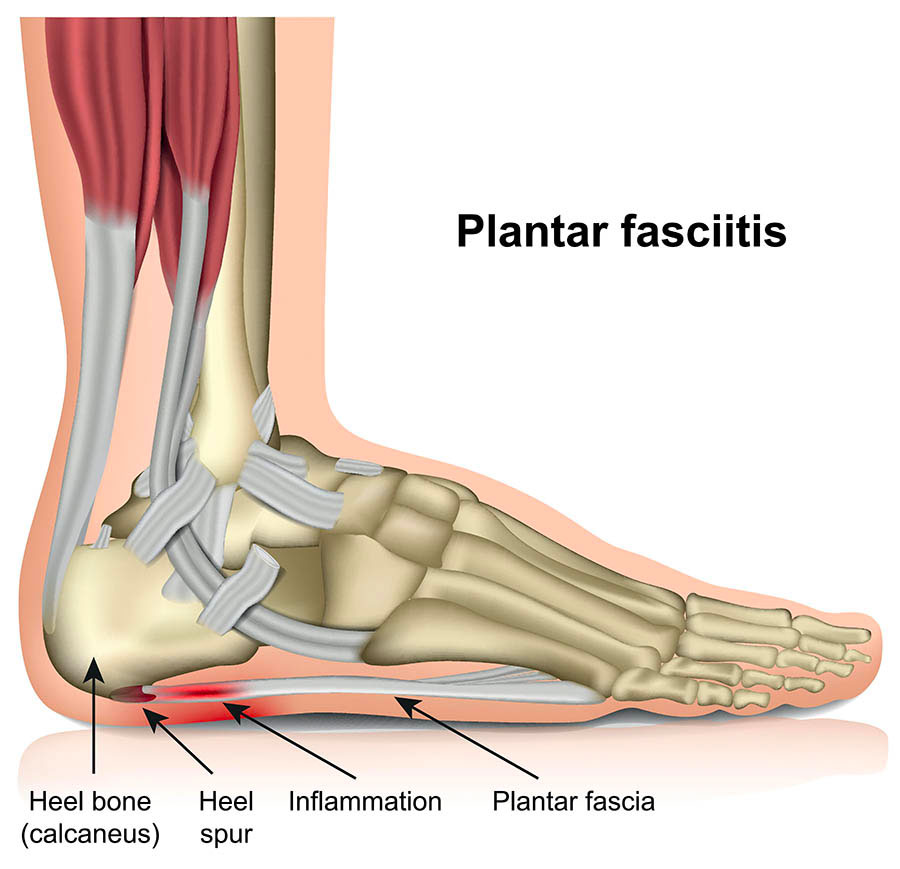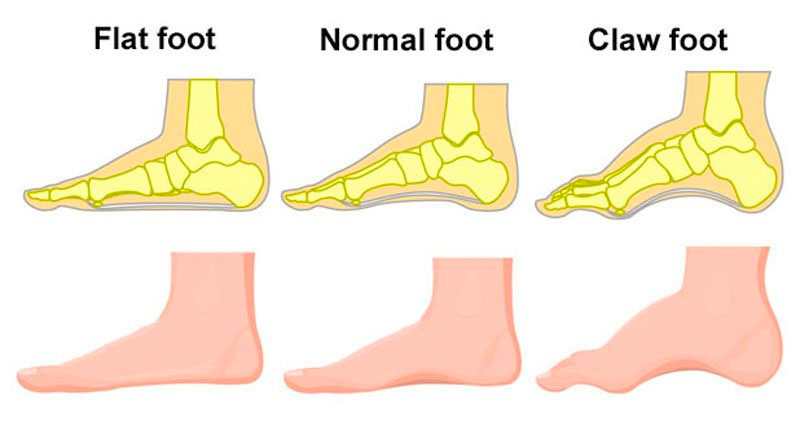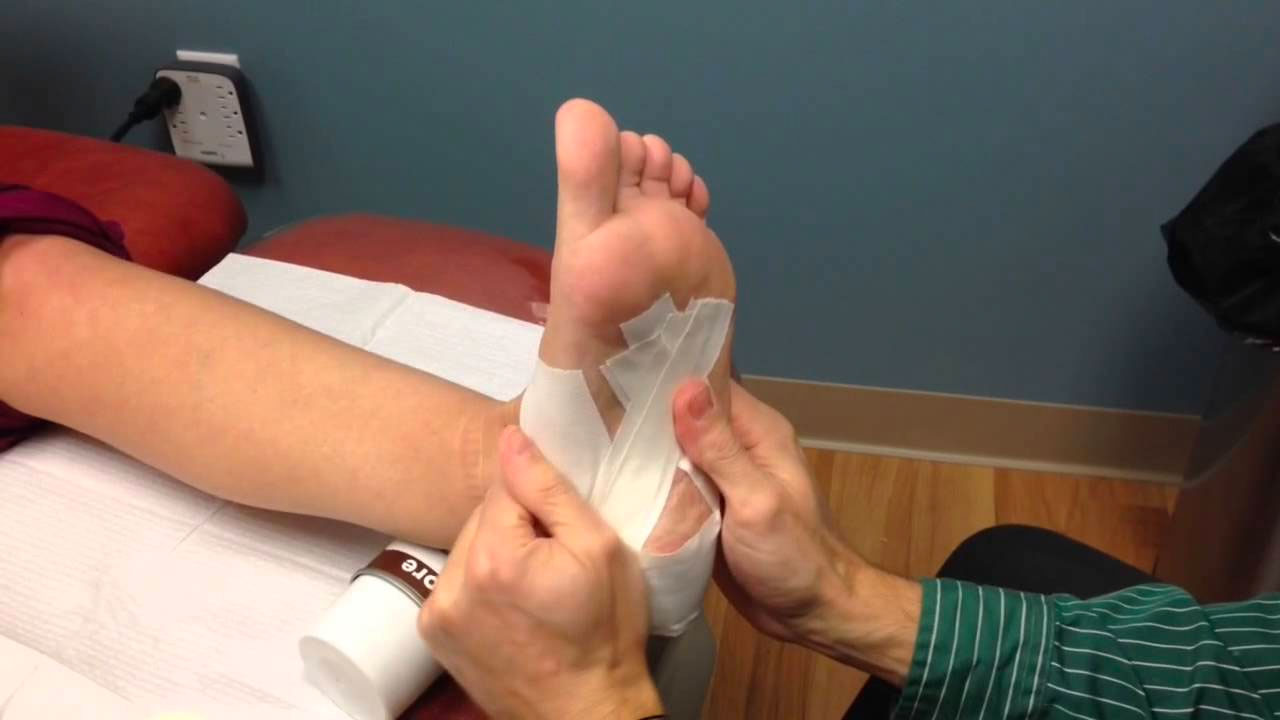
Plantar Fasciitis
Plantar Fasciitis is the most common cause of heel pain seen in the community, affecting around 10% of the general population. Primarily it affects working adults, between the ages of 25 to 65 years old but this condition also commonly affects runners. Some studies revealing rates as high as 22% in this group.
The Plantar Fascia is a thick weblike ligament that supports the arch of the foot. It runs underneath the sole of foot – connecting from the heel bone to the forefoot. The Plantar Fascia acts as a shock absorber when walk, run or jump. Accordingly, Plantar Fasciitis occurs when this shock absorber becomes overloaded by repetitive strain. Over time this causes micro-tears to form in the Plantar Fascia, leading to degeneration of the ligament.

Those afflicted with Plantar Fasciitis experience a sharp pain at the base of the heel, where the Plantar Fascia attaches. In more severe cases, this pain may also radiate into the arch of the foot and forefoot. Often pain will begin without any specific injury and pain will progressively worsen as time goes on. This may be accompanied by tight calves or Achilles tendons.
The relationship between Plantar Fasciitis and Arch height
Plantar Fasciitis is an overuse injury, meaning that it largely arises due to the activities that we are doing and resulting load that goes through the foot. That is to say, arch height or “foot posture” is not everything but can be a contributing factor. This is because arch height, whether it be “flat feet” or high arches, can affects how well load is absorbed through the sole of the foot.
“Flat feet” increase the strain at the insertion of the plantar fascia at the base of the heel. On the other hand, high arches do not absorb shock as well when the foot contacts the ground, and thus leads to more force going through the heel.

How do we treat Plantar Fasciitis?
In the acute painful stage, treatment of Plantar Fasciitis usually involves some degree of rest from the offending activities. This may be reducing your running volume or avoid high impact sports for a short period, until pain settles down. Once pain is managed well, activity can be gradually built back up again.
In this period, strategies to help relief pain after activity include icing and elevating the foot or applying topical anti-inflammatory gels or lotions, such as Voltaren or Deep Heat. If pain persists after these options, sports taping, shoe inserts or orthotics may be helpful to temporarily offload the Plantar Fascia and reduce pain.
Following this, Physio-directed rehabilitation and stretching of both the Plantar Fascia and the calf are important to help improve the foot’s capability for shock absorption and protect against future injury.

References:
1. Buchanan BK, Kushner D. Plantar Fasciitis. [Updated 2019 Feb 11]. In: StatPearls [Internet]. Treasure Island (FL): StatPearls Publishing; 2020 Jan-. Available from: https://www.ncbi.nlm.nih.gov/books/NBK431073/
